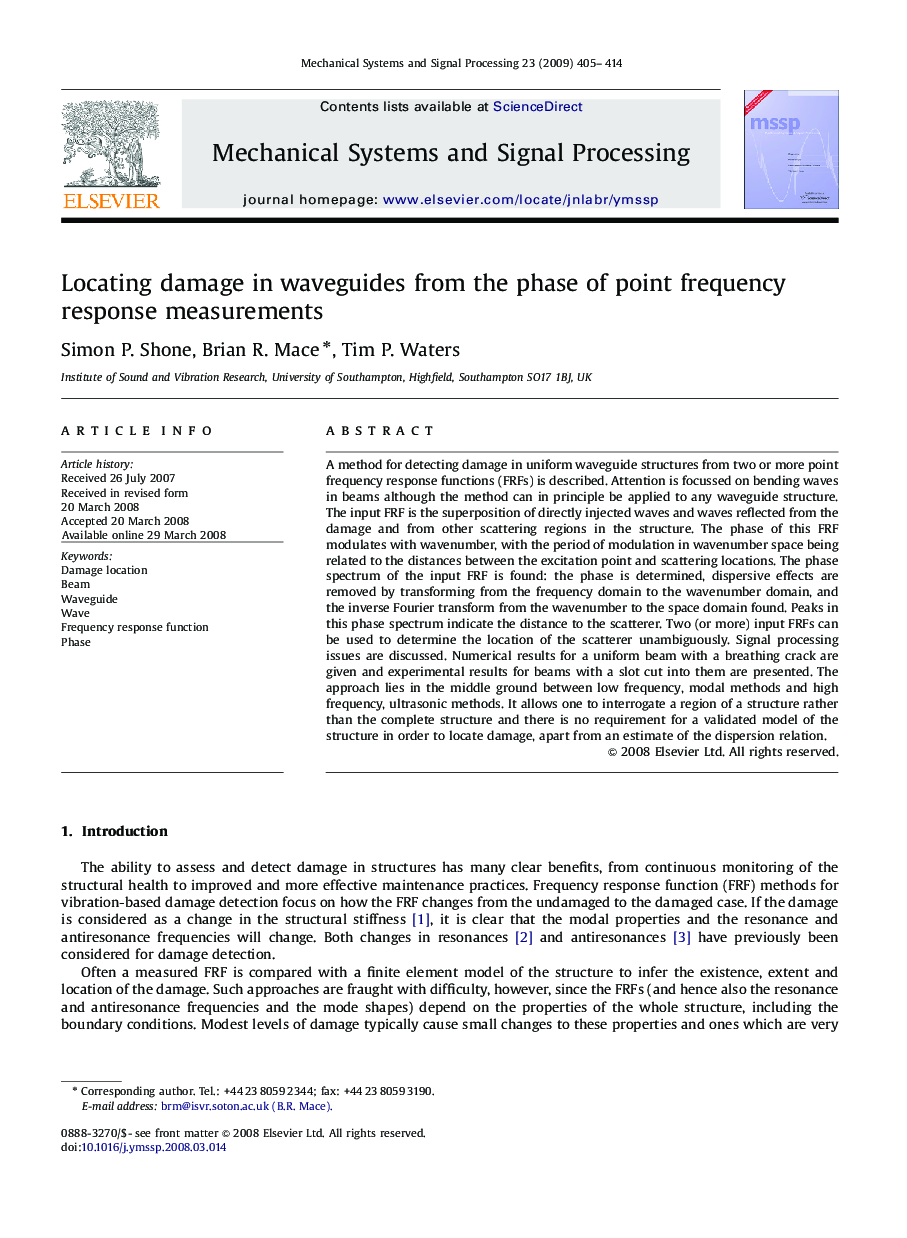| Article ID | Journal | Published Year | Pages | File Type |
|---|---|---|---|---|
| 559821 | Mechanical Systems and Signal Processing | 2009 | 10 Pages |
A method for detecting damage in uniform waveguide structures from two or more point frequency response functions (FRFs) is described. Attention is focussed on bending waves in beams although the method can in principle be applied to any waveguide structure. The input FRF is the superposition of directly injected waves and waves reflected from the damage and from other scattering regions in the structure. The phase of this FRF modulates with wavenumber, with the period of modulation in wavenumber space being related to the distances between the excitation point and scattering locations. The phase spectrum of the input FRF is found: the phase is determined, dispersive effects are removed by transforming from the frequency domain to the wavenumber domain, and the inverse Fourier transform from the wavenumber to the space domain found. Peaks in this phase spectrum indicate the distance to the scatterer. Two (or more) input FRFs can be used to determine the location of the scatterer unambiguously. Signal processing issues are discussed. Numerical results for a uniform beam with a breathing crack are given and experimental results for beams with a slot cut into them are presented. The approach lies in the middle ground between low frequency, modal methods and high frequency, ultrasonic methods. It allows one to interrogate a region of a structure rather than the complete structure and there is no requirement for a validated model of the structure in order to locate damage, apart from an estimate of the dispersion relation.
